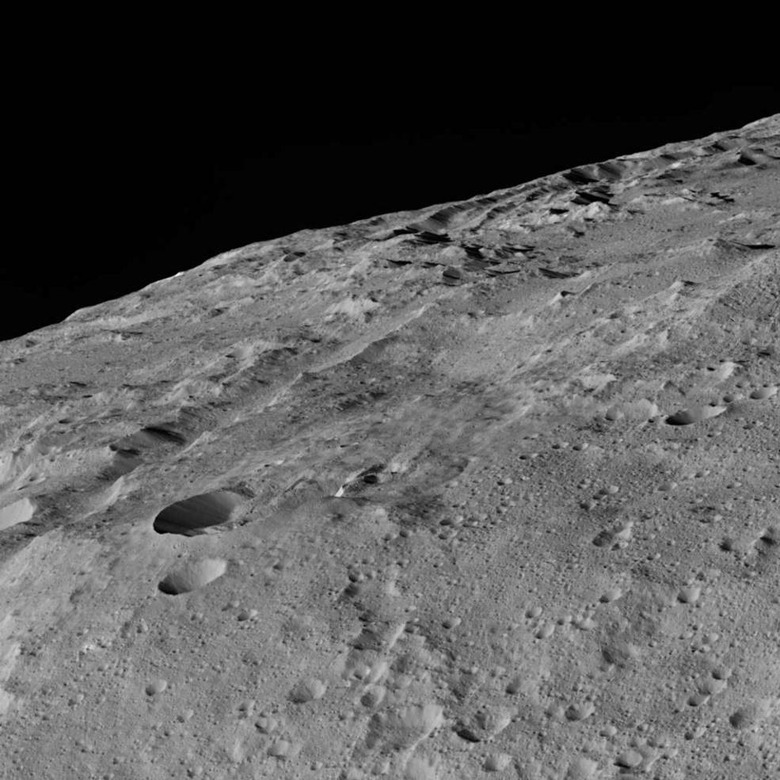NASA's Closest-Yet Ceres Image Zeroes In On Gerber Catena
Ceres, the dwarf planet home to no-longer-mysterious bright spots, has been revealed up close and personal in Dawn spacecraft's newest photographs. The spacecraft is now in its final and lowest orbit around the planet, snapping close-up images of Ceres' rocky, pocked surface. NASA published the images today, and included among them is a red-blue image for those with old school 3D glasses.
According to NASA, the image below shows Dawn's "best-ever viewpoint" of Ceres. In the image we get a solid look at craters that compose Gerber Catena, a chain west of Urvara, a bigger crater. The precise cause of these troughs — fracturing, that is — isn't exactly known, though the space agency said it was likely caused in the same way troughs on larger planets are formed: impact stress, contraction, and similar things.

The troughs are notable particularly because of Ceres' small size — the planet is only 584 miles in diameter. Some tectonic actions appear to have caused parts of the fractures, hinting at a "complex crustal structure", according to one scientist. Their prominence, though, remains a mystery.
Dawn's various sensors and cameras are helping shed light on the composition of Ceres' surface; they're the same tools that revealed the bright spots are most likely made of salt, confirming a hunch NASA scientists held for months. You can view a high-resolution version of the image here, and a red-blue 3D version here.
SOURCE: NASA
